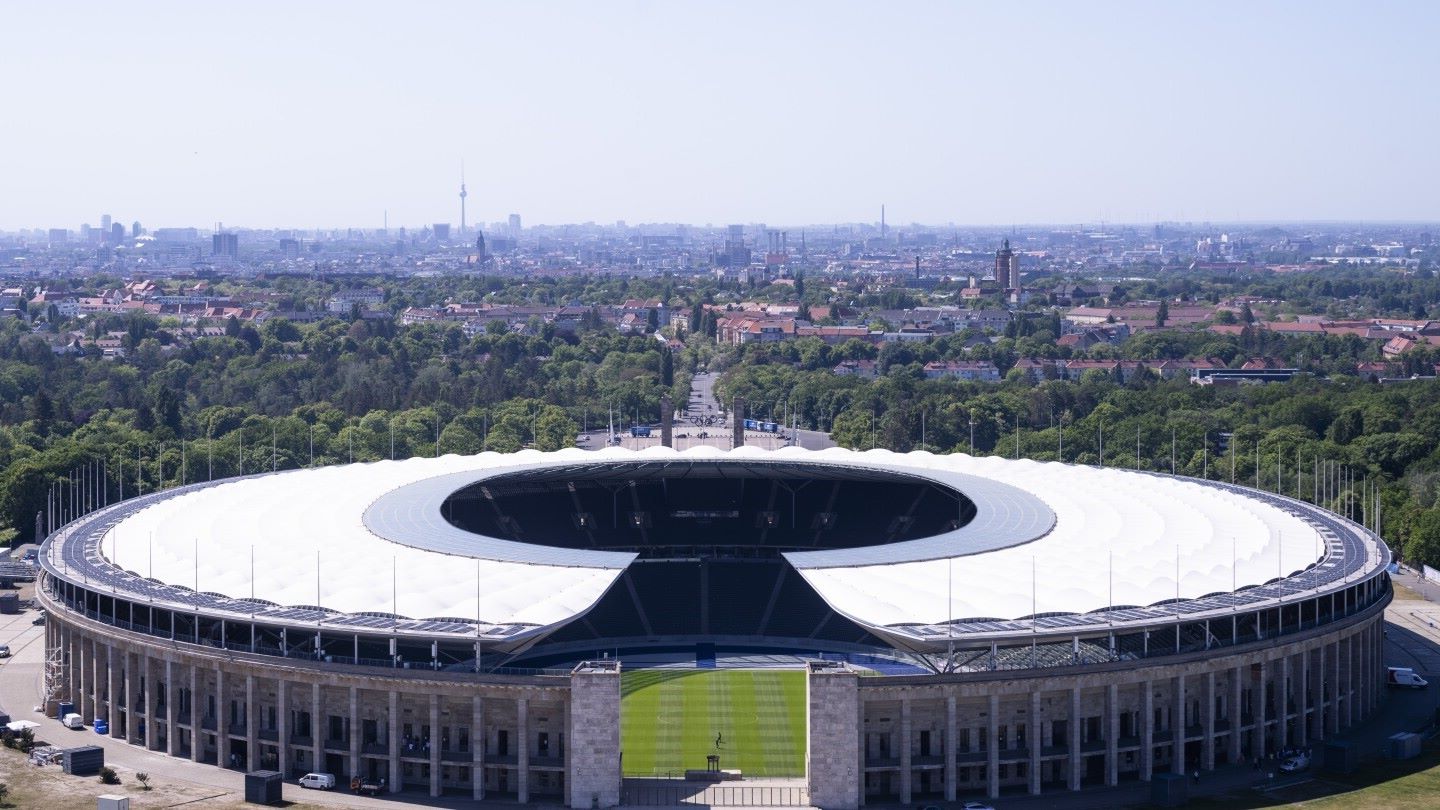
Enemy at the Gates is a gripping war film that takes place during the Battle of Stalingrad in World War II. Directed by Jean-Jacques Annaud, the movie was released in 2001 and stars Jude Law, Joseph Fiennes, Rachel Weisz, and Ed Harris. The film tells the story of a young Russian sniper, Vasily Zaytsev (played by Jude Law), as he becomes a legend by taking down Nazi officers with his remarkable marksmanship skills.
With its intense action sequences and thought-provoking storyline, Enemy at the Gates captivates audiences from start to finish. In this article, we delve into 34 fascinating facts about this critically acclaimed film, including behind-the-scenes anecdotes, historical accuracy, and trivia about the cast and crew. So, buckle up and get ready to explore the world of Enemy at the Gates!
Key Takeaways:
- “Enemy at the Gates” is a gripping war movie set during the Battle of Stalingrad, highlighting the bravery and sacrifices of soldiers amidst intense sniper duels and the psychological toll of warfare.
- The film’s realistic portrayal of the Eastern Front and the ethical dilemmas faced by characters makes it a thought-provoking and immersive experience, showcasing the human cost of war and the importance of teamwork.
The movie “Enemy at the Gates” is set during the Battle of Stalingrad in World War II.
Directed by Jean-Jacques Annaud, this intense war drama takes audiences back to one of the most pivotal battles in history.
The film stars Jude Law, Joseph Fiennes, Rachel Weisz, and Ed Harris.
Jude Law portrays Vasily Zaytsev, a Russian sniper who becomes a legendary figure during the battle, while Joseph Fiennes plays his political officer, Rachel Weisz portrays a young Russian woman caught in a love triangle, and Ed Harris takes on the role of Major Erwin König, a skilled German sniper.
“Enemy at the Gates” was released in 2001.
The film was released during a time when war movies were gaining significant popularity, captivating audiences with their realistic portrayals of historical events.
The movie was based on true events and characters.
While the film takes creative liberties, it is inspired by the real-life events surrounding the Battle of Stalingrad and the experiences of snipers during the war.
Jude Law underwent intense training to portray a skilled sniper.
In preparation for his role, Law studied sniper techniques and spent time with former snipers to understand the physical and mental challenges they faced.
The film explores the psychological toll of warfare.
Enemy at the Gates” delves into the mental and emotional struggles faced by soldiers on both sides of the conflict, highlighting the price of survival and the impact of war on individuals.
The battle scenes in the film are intense and realistic.
The filmmakers went to great lengths to recreate the chaos and brutality of the Battle of Stalingrad, showcasing the harsh realities of war.
The movie features a thrilling sniper duel between Vasily Zaytsev and Major Erwin König.
This high-stakes confrontation becomes a central point of tension in the film, as two highly skilled snipers engage in a deadly game of cat and mouse.
“Enemy at the Gates” received mixed reviews from critics.
While some praised the film’s performances and gripping storyline, others felt that it fell short in its execution and character development.
The film was a box office success.
Despite the mixed reviews, “Enemy at the Gates” performed well at the box office, earning over $97 million worldwide.
Rachel Weisz’s character, Tania Chernova, is based on a real person.
Tania Chernova was a legendary female sniper during the Battle of Stalingrad, and her story serves as an inspiration for the character portrayed by Weisz.
The movie features a multi-national cast.
In addition to the main English-speaking cast, the film also includes actors from Russia, Germany, and other countries, adding to the authenticity of the international conflict.
“Enemy at the Gates” highlights the importance of propaganda during wartime.
The film showcases how both the Soviet and German governments used propaganda to shape public perception and boost morale.
The sound design in the film is immersive.
The filmmakers paid meticulous attention to sound to enhance the audience’s experience, from the whizzing bullets to the echoing gunfire.
“Enemy at the Gates” was filmed in various locations, including Germany and Malta.
The production team recreated the war-torn city of Stalingrad in these locations, adding to the authenticity of the film’s setting.
The movie explores themes of love and sacrifice amidst war.
Amidst the chaos and violence, “Enemy at the Gates” portrays the bonds that form between characters and the sacrifices they make for love and their country.
“Enemy at the Gates” is known for its gripping suspense.
The film keeps viewers on edge with its tense sniper sequences and the constant threat of danger for the characters.
The movie was nominated for several awards.
“Enemy at the Gates” received nominations for its cinematography, sound design, and production design, highlighting its technical achievements.
The film’s score was composed by James Horner.
James Horner’s musical composition adds to the emotional intensity of the film, heightening the dramatic moments and amplifying the tension.
The cinematography in “Enemy at the Gates” is visually stunning.
The film’s cinematographer, Robert Fraisse, captures the devastation of war and the beauty of the landscapes with striking visuals.
“Enemy at the Gates” portrays the heroism and courage of the soldiers on the front lines.
The film pays tribute to the bravery and resilience of the men and women who fought during the Battle of Stalingrad.
The movie delves into the ethical dilemmas faced by the characters.
As the characters navigate the chaos of war, they must confront difficult choices that test their morality and loyalty.
The production design in the film is meticulously detailed.
The sets and props accurately depict the war-ravaged city of Stalingrad, creating an immersive experience for the audience.
“Enemy at the Gates” is a thought-provoking film that raises questions about war and humanity.
Through its narrative, the movie encourages viewers to reflect on the consequences of war and the complexities of human nature.
The film’s screenplay was written by Jean-Jacques Annaud and Alain Godard.
The screenplay effectively weaves together fictional and historical elements to create a compelling story.
“Enemy at the Gates” has gained a dedicated fanbase over the years.
The film continues to resonate with audiences who appreciate its intense storytelling and powerful performances.
The movie showcases the importance of teamwork and camaraderie in war.
As the characters fight for survival, they rely on each other and develop strong bonds that transcend the chaos around them.
“Enemy at the Gates” has been praised for its realistic depiction of snipers and their tactics.
The film’s attention to detail in portraying the strategies and techniques used by snipers adds to its authenticity.
“Enemy at the Gates” explores the contrast between the individual and the collective during wartime.
The film explores how the actions of one person can have far-reaching consequences in the context of a large-scale conflict.
The movie serves as a powerful reminder of the human cost of war.
“Enemy at the Gates” portrays the devastating impact of war on both a personal and societal level, leaving a lasting impact on viewers.
The film’s editing creates a fast-paced and engaging narrative.
The editing techniques employed in the film help maintain the tension and keep the audience captivated throughout.
“Enemy at the Gates” has been praised for its authentic portrayal of the Eastern Front.
The film offers a glimpse into the harsh conditions and brutalities faced by soldiers on the Eastern Front during World War II.
The movie received accolades for its costume design.
The costumes in “Enemy at the Gates” effectively capture the time period, adding to the overall authenticity of the film.
“Enemy at the Gates” has become a staple in the war movie genre.
The film continues to be recognized as a must-watch for enthusiasts of war movies, showcasing the courage and sacrifice of those who fought.
Conclusion
In conclusion, “Enemy at the Gates” is a gripping war film that delves into the battle of Stalingrad during World War II. It offers a unique perspective on the harrowing events that took place during this historic siege. The movie, directed by Jean-Jacques Annaud, features powerful performances from its cast, particularly Jude Law as the skilled sniper Vasily Zaytsev and Ed Harris as his rival, Major Erwin König. The film successfully captures the tension and intensity of war, portraying both the physical and psychological struggles faced by soldiers on the battlefield. With its compelling storyline, realistic portrayal of war, and strong performances, “Enemy at the Gates” is a must-watch for fans of historical war dramas.
FAQs
1. Is “Enemy at the Gates” based on a true story?
Yes, “Enemy at the Gates” is loosely based on the real-life events that occurred during the Battle of Stalingrad. While the movie takes some creative liberties, it does incorporate elements of the actual historical event.
2. Who were the main characters in the film?
The main characters in “Enemy at the Gates” include Vasily Zaytsev, a Soviet sniper played by Jude Law, Major Erwin König, a German sniper played by Ed Harris, and Tania Chernova, a female soldier played by Rachel Weisz.
3. Does the film accurately depict the Battle of Stalingrad?
While the film showcases the brutality and chaos of the Battle of Stalingrad, it is important to note that some aspects have been dramatized for cinematic purposes. However, overall, it provides a realistic representation of the harsh conditions and intense fighting that took place during the battle.
4. How historically accurate is “Enemy at the Gates”?
While the film does take artistic liberties, it still captures the essence of the Battle of Stalingrad and the experiences of the soldiers involved. It highlights the importance of snipers in the war and the psychological toll it took on them.
5. What sets “Enemy at the Gates” apart from other war movies?
“Enemy at the Gates” stands out for its focus on the psychological aspects of war, particularly the psychological warfare between snipers. It explores the mind games and cat-and-mouse dynamics between the rival snipers, adding a unique layer of tension to the film.
Was this page helpful?
Our commitment to delivering trustworthy and engaging content is at the heart of what we do. Each fact on our site is contributed by real users like you, bringing a wealth of diverse insights and information. To ensure the highest standards of accuracy and reliability, our dedicated editors meticulously review each submission. This process guarantees that the facts we share are not only fascinating but also credible. Trust in our commitment to quality and authenticity as you explore and learn with us.


